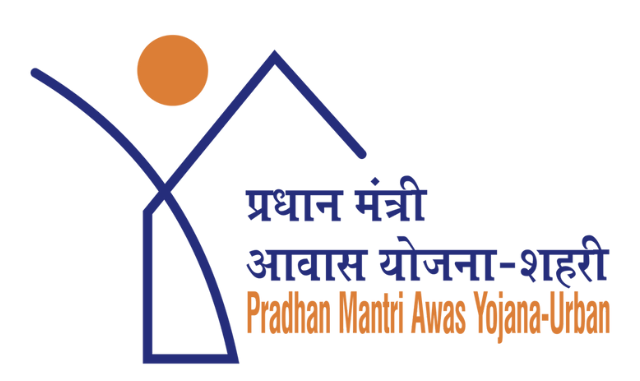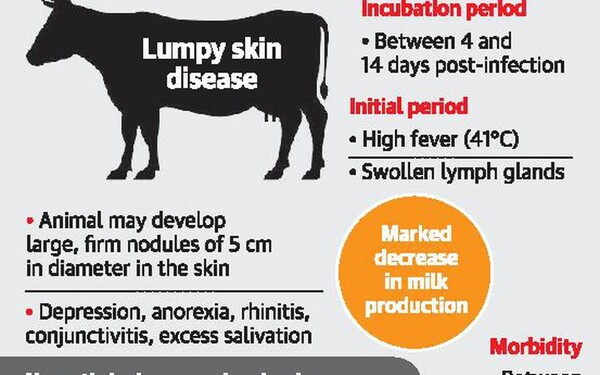ISRO tests Low Altitude Escape Motor (GS Paper 3, Science and Tech)

Why in news?
- The Indian Space Research Organisation has successfully tested the Low Altitude Escape Motor that will power the Crew Escape System, a system to eject the Gaganyaan crew module with astronauts in case of an eventuality.
- The emergency system will jettison the crew module from the launch vehicle if an emergency occurs during the initial phase of the flight.
What is LEM?
- In case of mission-abort during the initial phase of flight, LEM provides the required thrust to CES, to take away the Crew Module from the launch vehicle.
- A special purpose solid rocket motor, the LEM is equipped with four reverse flow nozzles and generates a maximum sea level thrust of 842 kN (nominal) with a burn time of 5.98 seconds (nominal).
- The nozzle end of the motor is mounted at the fore end of the launch vehicle unlike at the aft end in conventional rocket motors to prevent exhaust plumes from filling the crew module and suffocating the astronauts.
- This necessitates the use of a reverse flow of multiple nozzles in this solid rocket motor. The reverse flow nozzle implies the reversal of the exhaust gas flow direction in the nozzle region.
Gaganyaan mission:
- The Gaganyaan mission, which was set to conduct the maiden uncrewed mission in 2022, has been pushed to 2023 as ISRO continues to perfect the systems and has said that it will not take any chances, since this is the first time it is attempting to send humans into space from India.
- ISRO has, however, maintained that it will conduct two unmanned abort missions during which the spacecraft will be launched to an altitude of 15 kilometers and ISRO will simulate an abort scenario after which the crew capsule will return to Earth under parachutes.
Pradhan Mantri Awas Yojana-Urban (PMAY-U) Mission extended
(GS Paper 2, Welfare Scheme)
Why in news?
- Recently, the Union Cabinet has approved the proposal of Ministry of Housing and Urban Affairs (MoHUA) for continuation of Pradhan Mantri Awas Yojana-Urban (PMAY-U) up to 31stDecember 2024 wherein financial assistance is to be provided for the completion of already sanctioned 122.69 lakh houses till 31stMarch 2022.

What is Pradhan Mantri Awas Yojana-Urban (PMAY-U)?
- PMAY-U: Housing for All is one of the major flagship programmes being implemented by Government of India to provide all weather pucca houses to all eligible beneficiaries in the urban areas of the country through States/UTs/Central Nodal Agencies.
- Launched in June, 2015, the original deadline for the scheme - Housing for All' Mission - aimed at providing pucca houses to all eligible urban beneficiaries was March 2022.
- The scheme covers the entire urban area of the country, i.e., all statutory towns as per Census 2011 and towns notified subsequently, including Notified Planning/ Development Areas.
- The scheme is being implemented through four verticals:
- Beneficiary Led Construction/ Enhancement (BLC),
- Affordable Housing in Partnership (AHP),
- In-situ Slum Redevelopment (ISSR) and
- Credit Linked Subsidy Scheme (CLSS).
- While Govt of India provides financial assistance, State Govt/UTs implement the scheme including selection of beneficiaries.
Background:
- During the period of 2004-2014, 8.04 lakh houses were completed under Urban Housing Scheme.
- In 2014, the issue of providing houses to all eligible Urban dwellers in saturation mode was brought into focus and the scheme of PMAY-Urban was conceptualised.
- In 2017, the original projected demand was 100 lakh houses. Against this original projected demand, 102 lakh houses have been grounded/under construction.
Central Assistance:
- Central Assistance approved since 2015 is Rs. 2.03 lakh crore against Rs. 20,000 crore in 2004-2014.
- Upto 31st March 2022, Central Assistance/subsidy of ₹1,18,020.46 crore has already been released and ₹85,406 crore will be released as Central Assistance/subsidy till 31st December 2024.
Way Forward:
- The continuation of the scheme based on the request of States/UTs upto 31st December 2024 will help in completion of already sanctioned houses under BLC, AHP & ISSR verticals.
Indigenous vaccine for Lumpy Skin disease
(GS Paper 3, Science and Tech)
Why in news?
- Recently, the Union Minister for Agriculture and Farmers Welfare, launched the indigenous vaccine Lumpi-ProVacInd to protect livestock from Lumpy Skin disease.

Lumpi-ProVacInd:
- The vaccine has been developed by the National Equine Research Center, Hisar (Haryana) in collaboration with the Indian Veterinary Research Institute, Izzatnagar (Bareilly).
- The cost of per dose is Rs 1-2 and the immunity induced by homologous live attenuated LSD vaccines usually persists for a minimum period of one year.
Spread of LSD:
- The Centre plans to commercialise this vaccine at the earliest in order to control the Lumpy Skin Disease (LSD), which has led to the death of cattle in six states.
- Rajasthan has reported 2,111 deaths of cattle, followed by Gujarat at 1,679, Punjab at 672, Himachal Pradesh at 38, Andaman & Nicobar at 29 and Uttarakhand at 26.
Homologous vaccines:
- Sheepox virus (SPV) and goat pox virus (GPV) -based vaccine (heterologous vaccine) is usually authorized to induce cross-protection against LSD in cattle, where homologous LSD vaccine is not available.
- The Centre has also authorised the use of goatpox vaccine to control LSD in cattle. However, heterologous vaccines provide partial protection and are not as efficacious as homologous vaccines.
- The scientists at NRCE isolated the virus in 2019 itself and were in a process of developing a live-attenuated vaccine since then.
- After initial safety and immunogenicity trials of the vaccine in laboratory animals at NRCE, Hisar, the experimental trials were conducted in calves at IVRI Mukteshwar.
- The safety of the vaccine has also been ascertained in the field in cattle and buffaloes of all age groups including lactating and pregnant ones.
What is Lumpy Skin Disease (LSD)?
- LSD is primarily a disease in cattle. Emerging evidence suggests that the LSD virus can also cause mild illness in buffalo, camels, deer and horses.
- Due to its recent spread in unnatural hosts, there are growing concerns about its zoonotic implication, although confirmatory evidence of human infection is lacking.
- As per the UN's Food and Agriculture Organization (FAO), LSD is ‘a vector-borne pox disease’ that is ‘characterised by the appearance of skin nodules’. The cattle owners and authorities in India are worried because of the severe outbreak.
What are the symptoms?
- The infected animals immediately start losing weight and may have fever and lesions in the mouth. The milk yield will also be reduced.
- Other symptoms include excessive nasal and salivary secretion.
- Pregnant cows and buffaloes often suffer miscarriage and in some cases, diseased animals can die due to it as well.
Indian scientists extract record uranium from seawater
(GS Paper 3, Science and Tech)
Why in news?
- As the world faces the effects of climate change, and pressure mounts to reduce emissions from fossil fuel-based energy sources, countries are looking at newer ways to switch to renewable, including shifting existing technologies to non-polluting methods.
- Recently, a group of scientists at the Indian Institute of Science Education and Research (IISER), Pune, attempted successfully to extract uranium from seawater.
Is nuclear energy renewable?
- Nuclear power, mostly used in the production of electricity, is widely considered to be a renewable source of energy.
- However, the raw material that is used to generate nuclear power through a process called fission is non-renewable. Nuclear power plants need a specific form of uranium called Uranim-235. Now, this is a depleting resource.
- Uranium reserves found naturally are on a course to reach exhaustion within a century, which means that countries will have to look for alternatives to generate this critical element that powers nuclear plants across the world.
- The world at the moment has a nuclear reserve of 7.6 million metric tons.
Extraction from Sea:
- With rising global energy demand and environmental concerns associated with fossil fuels, sustainable energy supply to the global community remains a great challenge.
- Large-scale uranium extraction from seawater (UES) is widely considered as reconciliation to increasing global energy demand and climate change crises.
- Researchers estimate that seawater contains 4.5 billion metric tons, nearly 1,000 times more uranium that conventional sources. But, with existing technologies, we are far from extracting this element from seawater cost effectively.
- Experts have said that uranium recovery from seawater is extremely challenging due to its very low concentration in comparison to the high abundance of interfering ions.

How researchers at IISER extracted uranium?
- The team of researchers at IISER have developed a rare ionic macroporous metalorganic framework, which can effectively capture uranium. They managed to capture 95 per cent of uranium within two hours, which is in sharp contrast to the other existing adsorbent.
- A proper absorbent combining the features of high capacity, excellent selectivity, and ultra-fast kinetics has been a long challenge.
- They collected seawater from the Arabian Sea (Juhu beach), Mumbai for uranium extraction and the absorbent resulted in a record uranium uptake capacity of 28.2 mg per gram in only 25 days and satisfies the remarkable uranium extraction from seawater standard only in 2 days compared to existing adsorbents including commercially available materials reported so far.
Way Forward:
- Combined with exceptional selectivity, record capacity, ultrafast kinetics, and long service life, this material could be a potential candidate for the efficient extraction of uranium from natural seawater.
- The selective ion exchanged harvesting method introduces the concept of extracting uranium from natural seawater may lead to an unlimited supply of uranium at an economically affordable cost.





